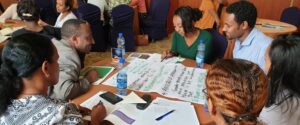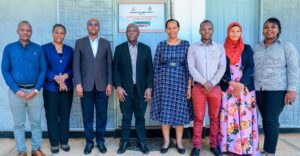Case studies revisited
Applying the learning from past experiences
Recently I was drawn to a blog post highlighted by Kirsty Newman (who tweets as @kirstyevidence) – “We overvalue new writing” by @EpicureanDeal. This emphasized the importance of recognizing our information luxury in being able to easily draw on previous writing, blogs and journalism “Time, location, and dry rot play no role in the storage and retrieval of digital works archived in gleaming photons and electrons”. It goes on to say we shouldn’t place all our focus on what is newly produced.
“You never hear anybody say, ‘I’m not going to listen to that record because it was released last year,’ or, ‘I’m not going to watch that film because it came out last month.’ Why are we so much less interested in journalism that’s a month or a year old?”
This struck me as timely for two main reasons:
- INASP have recently produced an online booklet outlining all their publications from 2008-2012, as well as newsletters and reports these include the case studies written by INASP colleagues and partners in Africa, Asia and Latin America. The booklet makes seeing at a glance what has been produced a lot easier!
- In preparing for a trip to Bangladesh next week, I’ve again been drawn once more to our case studies, in particular one produced in 2010 by one of the coordinators of the Bangladeshi country consortium.
Building from the bottom up explores some of the challenges a fledgling consortium faces, but also shares the successes. Abdullah Shams Bin Tariq (Associate Professor, Physics Department, Rajshahi University) is very honest and open in the need for long-term planning, steady funding from institutions and, perhaps most importantly, the allocation of time from individuals and organizations to build and maintain the activities vital for sustainability and success. The case study has been great to review as we prepare for discussions with the Bangladeshi consortium about our work over the next 3 years. It doesn’t matter that this was produced two years ago – I realised I rely on our case studies for information as they capture a wealth of stories and voices throughout. These stories remain as relevant today as they were when first written. Our case studies can continue to feed and inform our future plans and enable us to share experiences, best practice and learning across stakeholder groups.
Transferable knowledge across programmes and regions
The Bangladeshi case study also contains learning that can inform INASP’s research access and availability strategy as a whole – long-term strategic planning is key for our cooperation with our partners and this will be true of our work with consortia in Africa, Latin America as well as Asia. To aid this we are putting together a tool-kit which will help produce a tailor-made suite of activities to support greater local ownership, implementation and management of activities (such as library and resource training and licensing and negotiations). This will include workshops, online learning and the development of a community of practice to share experiences and enable global peer-to-peer engagement. So it is important that country partners are involved in the design of the programme to ensure it has their enthusiasm, buy-in, ideas and input.
To finish on Sham’s words “it is heartening to see a vibrant consortium in place with members working together to get more out of it. Dedication and enthusiasm for the project have been as important as funding and planning”. I’m really looking forward to discussing our next steps in Bangladesh and our cooperation to take activities forward.
As an aside, I’ll plan to highlight some more of our case studies over the next few months and hope that others who have benefited from hearing our partners talk about their work will also be inspired to blog about one – especially as they are now so easy to find!




